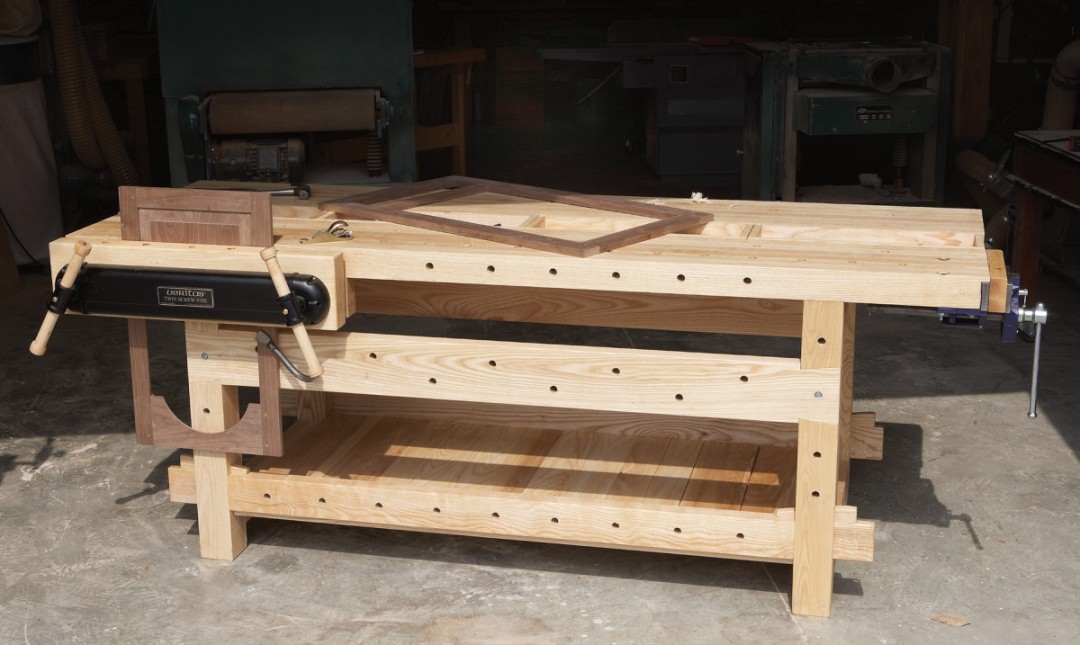A workbench is a fundamental fixture in any woodworking workshop. It provides a sturdy surface for crafting projects of all sizes, from intricate woodwork to simple repairs. Whether you’re a seasoned woodworker or just starting out, building your own workbench is a rewarding and cost-effective endeavor.

- Design Considerations:
Before diving into specific woodworking plans, it’s crucial to consider the design of your workbench. Factors to consider include:
- Size and Shape: Determine the dimensions and layout that best suit your workshop space and the type of projects you intend to undertake.
- Storage Options: Incorporate shelves, drawers, or cabinets to organize tools and materials, keeping your workspace clutter-free.
- Leg Structure: Choose a sturdy leg design that provides stability and support, ensuring your workbench can withstand the weight of your projects and tools.
- Workbench Top: Select a hardwood top for durability and longevity. Consider options like maple, cherry, or oak, which offer a balance of strength and beauty.
- Joinery Techniques: Employ strong joinery techniques like mortise and tenon joints or dadoes to ensure a solid and secure workbench.
- Essential Woodworking Tools:
Equip yourself with the necessary woodworking tools to complete your workbench project:
- Hand Saw: A hand saw is essential for rough cutting lumber. A crosscut saw is ideal for cutting across the grain, while a rip saw is best for cutting along the grain.
- Circular Saw: A circular saw provides precision cutting for more detailed work. Use safety precautions when operating a circular saw.
- Router: A router can be used to create decorative details and edge profiles on your workbench.
- Planer: A planer can flatten and smooth rough-cut lumber, ensuring a level and smooth workbench top.
- Bench Vise: A bench vise is a must-have accessory for holding workpieces securely while you work.
- Popular Workbench Plans:
Numerous woodworking plans are available online and in books, catering to various skill levels and preferences. Here are a few popular options:
- Chris Schwarz’s Workbench: This classic workbench design is known for its stability and versatility, making it a popular choice among experienced woodworkers.
- David Charlesworth’s Anarchist Workbench: This workbench design emphasizes ease of construction and affordability, making it a great option for beginners.
- Rolling Workbench: This workbench design incorporates wheels, providing mobility and versatility for different workspace setups.
- Modular Workbench: This workbench design features interchangeable components, allowing for customization and expansion as your woodworking skills and needs evolve.
- Building Your Workbench:
Once you’ve chosen a suitable woodworking plan, gather your tools, materials, and workspace. Carefully follow the plan’s instructions, ensuring precise measurements and accurate joinery techniques.
- Final Touches:
After completing the basic construction of your workbench, add finishing touches to enhance its functionality and aesthetics. Apply a protective finish to the wood, such as polyurethane or oil. Consider adding casters to the base for added mobility.
Building your own workbench is a rewarding experience that allows you to create a personalized workspace tailored to your woodworking needs. With careful planning, proper tools, and attention to detail, you can craft a workbench that will serve as the foundation of your woodworking endeavors for years to come.

